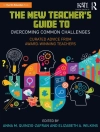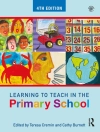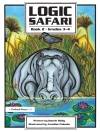Two medieval chroniclers, William of Newburgh and Ralph of Coggeshall, reported the mysterious appearance of a pair of ‘Green Children’—with green skins and speaking an unknown language—in the Suffolk village of Woolpit in the mid-twelfth century. The story is well known today, usually as a Suffolk folktale about fairies and a fairy otherworld. Retold many times, it continues to inspire novels, poetry, songs, plays, and even operas.
This book analyses the story in its historical and geographical context, and considers the numerous ways in which it has been interpreted, recounted, and reimagined by historians, folklorists, philosophers, and writers. Folklorists have mined it for ‘folktale motifs’ without considering whether it is truly a folktale. Historians have used it as a key to understanding the motives of one or other of the two chroniclers who recorded it. ‘Fortean’ researchers have tried to find a convoluted core of historical fact.
Returning to the two original Latin accounts, this book translates them afresh and analyses them side by side for the first time, allowing us to conclude that both writers were drawing on the same source. Such an interdisciplinary study is necessary when considering the many modern ‘explanations’ of the events that have been offered, from mundane to extraterrestrial. The volume presents an example of how extraordinary events reported by medieval chroniclers can be studied analytically, and will interest not only medievalists but anyone interested in folklore and fairylore—and perhaps inspire others to fresh reworkings of this perpetually intriguing story.
Inhoudsopgave
List of illustrations
Acknowledgements
1. An Introduction
2. The Story and its Legacy
3. Transmission
4. Interpretations
5. The Chroniclers and the Texts
6. The Framing Narrative
7. The Children’s Story
8. Excursions
9. Strangers in a Strange Land
Appendix: The Sources
William of Newburgh
Ralph of Coggeshall
Notes
Bibliography
Retellings, Reworkings and Reimaginings: A Chronological Listing
Index
Over de auteur
John Clark was for many years curator of the medieval collections at the Museum of London. Since retiring in 2009, he has continued research, lecturing and writing on topics including the history and archaeology of medieval London, medieval folklore and legends and their relationship to ‘real’ history, and medieval horses and horse equipment.












